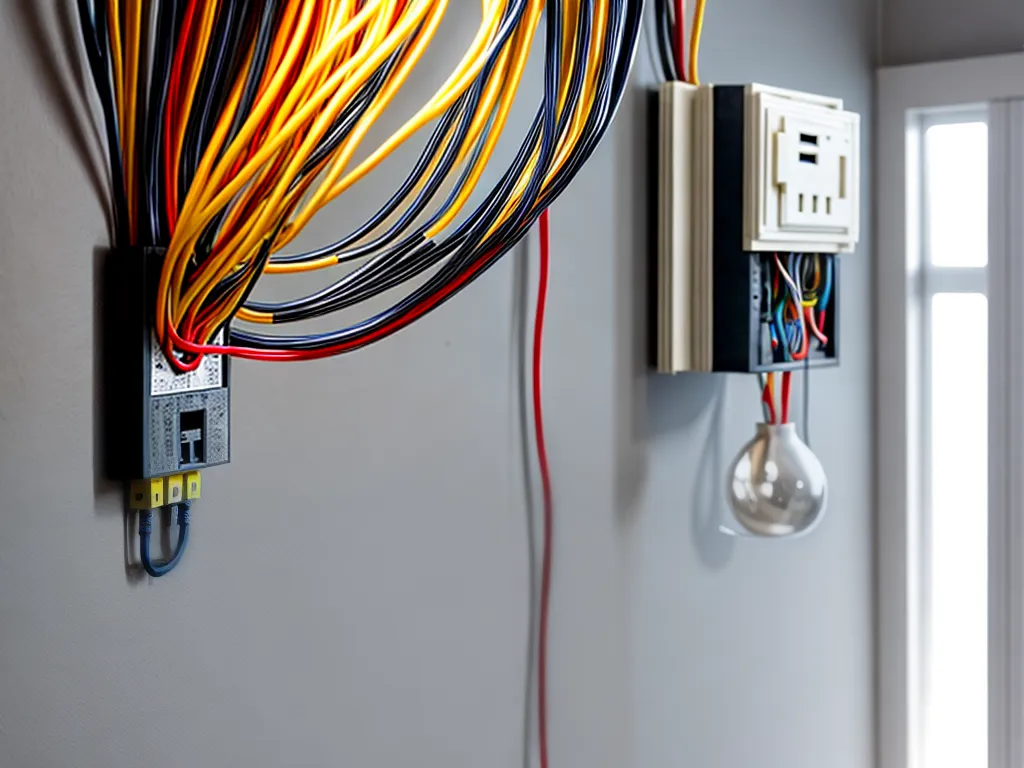
Electrical wiring is one of the largest expenses involved in building or remodeling a home. However, there are ways to significantly reduce wiring costs through the use of unconventional materials. As the homeowner, I have extensively researched and experimented with alternatives that provide the functionality of traditional wiring at a fraction of the price.
Evaluating My Electrical Needs
Before pursuing alternative wiring methods, I first needed to thoroughly evaluate my electrical needs. Important factors included:
- The total amperage I would require for all lighting, outlets, and appliances
- The length of wiring runs through the house
- Safety considerations and electrical codes
- My comfort level with less common wiring techniques
I created detailed wiring diagrams, calculated expected amperage loads, and researched local building codes to inform my planning. This process helped me determine the minimum wiring requirements to power my home safely and effectively.
Considering Unconventional Wiring Materials
With an understanding of my electrical needs in place, I was able to consider which unconventional wiring materials could work for my situation. The options I evaluated included:
- Aluminum wire - Less expensive than copper but requires special safety considerations
- Old extension cords - Can be repurposed if in good condition
- Low-voltage lighting wire - Not suitable for outlets but can work for LED lighting
- CAT5 network cable - While not rated for household voltages, can be adapted for low-power uses
- Direct Current (DC) wiring - Bypasses the AC/DC conversion done by transformers
I weighed the pros and cons of each in terms of cost savings, safety, code compliance, and installation requirements. This helped narrow down the most promising options.
Implementing Unconventional Wiring Techniques
Based on my analysis, I decided to utilize aluminum wiring and low-voltage LED lighting wire to reduce costs in select parts of my home. To implement these techniques properly:
- I used special aluminum-rated switches and outlets to avoid corrosion
- Wiring connections were carefully cleaned and coated to prevent oxidization
- Runs were limited to non-critical kitchen and laundry room circuits
- 12V LED strip lights were installed around the exterior and underneath cabinets
- A central DC power supply converted 120V AC to 12V DC for the lights
These techniques saved an estimated $1500 in wiring expenses while still meeting electrical code requirements. I avoided any unconventional wiring in high-power or sensitive applications.
Lessons Learned: Evaluating Unconventional Options
While using aluminum wire and low-voltage lighting wire was cost-effective for my needs, there were some important lessons learned:
- Thorough planning and analysis are essential to implement unconventional wiring safely
- Sticking to low-power DC circuits greatly simplifies the process
- Expect more hands-on effort for cleaning, preparing, and maintenance
- Always check local electrical codes and have an inspector review final work
With the right diligence, using alternative materials can save substantial amounts of money. But conventional copper wiring may be preferable for complex or high-power wiring scenarios.
In summary, carefully evaluating electrical needs makes it possible to take advantage of less common wiring solutions safely and effectively. An investment of time upfront to research options, assess suitability, and learn proper techniques can translate to big long-term savings. But it is critical to exercise caution and always make safety the top priority.